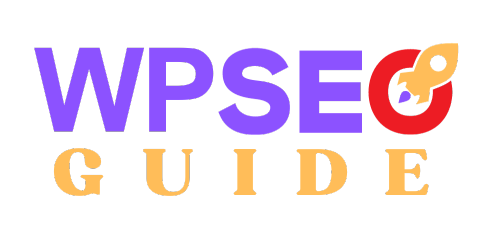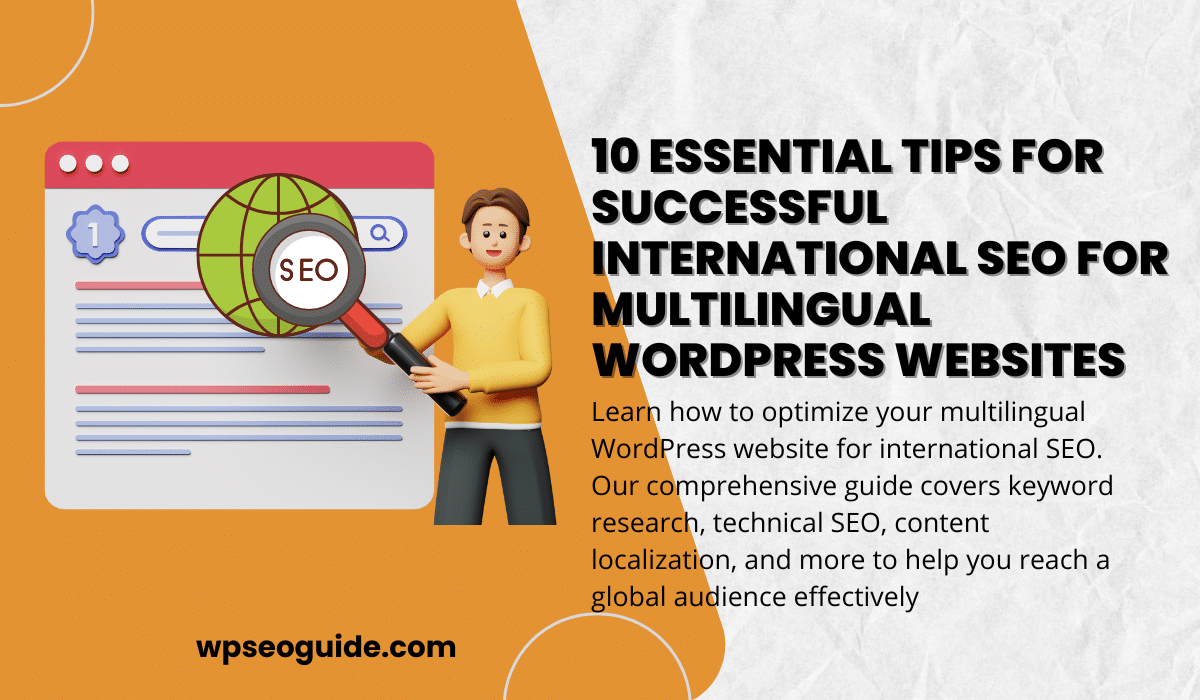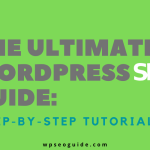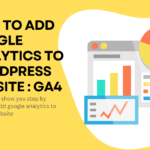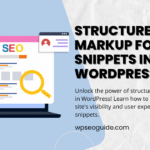Introduction
Welcome to the world of International SEO for Multilingual WordPress Websites! 🌍 If you’re running a website and dreaming of reaching a global audience, you’ve come to the right place. SEO for multilingual WordPress websites is essential for expanding your reach and connecting with diverse audiences around the world. In this article, we’ll walk you through everything you need to know about optimizing your WordPress site for multiple languages and international markets. Let’s dive in!
Section 1: Understanding International SEO
What is International SEO?
International SEO is all about optimizing your website so search engines can easily identify which countries you want to target and which languages you’re using for business. Unlike local SEO, which focuses on improving your visibility in a specific geographical area, international SEO helps your site shine on the global stage. This is particularly important for multilingual WordPress websites as it ensures that your content is discoverable by users in different regions and languages.
Why is International SEO Important?
Expanding your reach to international markets can significantly boost your traffic and revenue. Imagine your products being discovered by millions of potential customers across different countries—exciting, right? With a solid international SEO strategy, this can be your reality. For multilingual WordPress websites, international SEO is crucial because it helps you overcome language barriers and connect with a broader audience.
Section 2: Planning Your Multilingual Strategy
Research Your Target Markets
Before jumping into translations, take some time to research your target markets. Which countries are showing interest in your products or services? Tools like Google Analytics can provide insights into where your traffic is coming from. Understanding your audience’s location and preferences is the first step in planning your international SEO for multilingual WordPress websites.
Analyze Your Competitors
Look at what your competitors are doing in different regions. Are they using specific keywords or content strategies? Learning from their successes and mistakes can give you a competitive edge. Analyzing your competitors’ approach to international SEO for their multilingual WordPress websites can provide valuable insights.
Set Clear Goals
Decide what you want to achieve with your international SEO efforts. Are you looking to increase traffic, generate more leads, or boost sales in specific countries? Clear goals will guide your strategy and help you measure success. For multilingual WordPress websites, setting specific, measurable goals is crucial for tracking progress and making necessary adjustments.
Section 3: Setting Up a Multilingual WordPress Website
Choose the Right Plugin
For a smooth multilingual experience, choose a reliable plugin like WPML, Polylang, or TranslatePress. These tools make it easy to manage translations and maintain a consistent user experience. Selecting the right plugin is a critical step in implementing international SEO for multilingual WordPress websites.
Best Practices for Language Setup
Ensure your languages and translations are set up correctly. Whether you use subdirectories (example.com/fr/), subdomains (fr.example.com), or separate domains (example.fr), choose a structure that aligns with your goals and technical capabilities. Properly setting up your multilingual site structure is essential for international SEO for multilingual WordPress websites.
Site Structure for Multiple Languages
A well-structured site helps search engines understand and index your content correctly. Keep your URLs clean and intuitive, and avoid mixing multiple languages on the same page. A clear and organized site structure is a cornerstone of effective international SEO for multilingual WordPress websites.
Section 4: Technical SEO Considerations
Using hreflang Tags
Hreflang tags are essential for signaling to search engines which language and country your pages are targeting. Implementing these tags correctly can prevent duplicate content issues and improve your site’s international ranking. Learn more about hreflang tags. Proper use of hreflang tags is crucial for the success of international SEO for multilingual WordPress websites.
Multilingual Sitemap
Create a multilingual sitemap to help search engines index your site efficiently. Most multilingual plugins can generate these sitemaps automatically. A multilingual sitemap is an important tool for international SEO for multilingual WordPress websites.
Fast Loading Times
Ensure your site loads quickly across all regions. Use a Content Delivery Network (CDN) and optimize images and other assets to improve loading times. Fast loading times are critical for user experience and international SEO for multilingual WordPress websites.
Section 5: Keyword Research for International SEO
Conducting Keyword Research
Use tools like Google Keyword Planner, Ahrefs, and SEMrush to find relevant keywords for different languages. Remember, direct translations might not always capture local search behavior, so adjust your keywords accordingly. Effective keyword research is essential for international SEO for multilingual WordPress websites.
Localizing Keywords
Localizing your keywords means adapting them to fit the cultural and linguistic nuances of your target audience. This can make a significant difference in your site’s visibility. Localizing keywords is a key strategy in international SEO for multilingual WordPress websites.
Section 6: Content Creation and Localization
Creating High-Quality Content
High-quality, localized content is crucial for engaging your international audience. Avoid literal translations—focus on creating content that resonates with local users. For multilingual WordPress websites, creating content that feels natural and engaging to local audiences is a must.
Working with Native Speakers
If possible, work with native speakers or professional translators. They can help you capture the essence of your message and ensure it feels natural to local readers. Collaborating with native speakers is highly beneficial for international SEO for multilingual WordPress websites.
Section 7: On-Page SEO for Multilingual Sites
Optimizing Meta Tags and Headings
Optimize your meta tags, headings, and alt texts in each language. Consistency is key to maintaining a strong SEO foundation across all versions of your site. On-page optimization is a critical aspect of international SEO for multilingual WordPress websites.
Internal Linking Strategies
Use internal links to guide users to relevant content in their preferred language. This enhances the user experience and can improve your site’s SEO. Effective internal linking strategies are vital for international SEO for multilingual WordPress websites.
Section 8: Off-Page SEO and Link Building
Building Local Backlinks
Build backlinks from reputable local websites in your target regions. This can improve your site’s authority and visibility in those areas. Local backlink building is an important tactic in international SEO for multilingual WordPress websites.
Guest Blogging and Collaborations
Guest blogging on local sites and collaborating with influencers can drive traffic and enhance your brand’s credibility in new markets. Leveraging guest blogging and collaborations is a powerful strategy for international SEO for multilingual WordPress websites.
Section 9: Monitoring and Analyzing Performance
Using Analytics Tools
Set up Google Analytics and Google Search Console for each language version of your site. Monitor traffic, user behavior, and search performance to identify areas for improvement. Regular monitoring is essential for successful international SEO for multilingual WordPress websites.
Adjusting Your Strategy
Use data and insights to refine your strategy. International SEO is an ongoing process, so be prepared to make adjustments as needed. Continuously adjusting your strategy is key to maintaining effective international SEO for multilingual WordPress websites.
Section 10: Common Challenges and Solutions
Duplicate Content Issues
Multilingual sites can sometimes face duplicate content issues. Use hreflang tags and canonical tags to address this. Managing duplicate content is a common challenge in international SEO for multilingual WordPress websites.
Language Switching Problems
Ensure your site offers a seamless language-switching experience. Users should be able to easily switch languages without losing their place on the site. Providing a seamless language-switching experience is crucial for user satisfaction and international SEO for multilingual WordPress websites.
Technical SEO Challenges
Stay on top of technical SEO issues unique to multilingual sites. Regular audits and updates can help keep your site running smoothly. Addressing technical SEO challenges is an ongoing task in international SEO for multilingual WordPress websites.
Conclusion
Optimizing your WordPress site for international SEO might seem daunting, but with the right strategies and tools, it’s entirely achievable. Remember, the key is continuous optimization and adapting to the changing needs of your global audience. Happy optimizing! Implementing these strategies will ensure that your multilingual WordPress website reaches its full potential in the international market.
Additional Resources
FAQ Section
Q1: What is international SEO for multilingual WordPress websites?
A1: International SEO for multilingual WordPress websites involves optimizing your website to rank well in search engine results for different countries and languages. It includes strategies like using hreflang tags, localizing content, and creating a multilingual sitemap to ensure your site is accessible and relevant to users in various regions.
Q2: Why should I use hreflang tags on my multilingual website?
A2: Hreflang tags are crucial for indicating to search engines which language and region a specific page is intended for. This helps avoid duplicate content issues and ensures that users are directed to the appropriate version of your page based on their language and location, improving the user experience and SEO performance.
Q3: How do I choose the right multilingual plugin for my WordPress site?
A3: Choose a multilingual plugin based on your specific needs and technical capabilities. Popular options include WPML, Polylang, and TranslatePress. Evaluate each plugin’s features, ease of use, and compatibility with your existing setup to make an informed decision.
Q4: What is the best URL structure for multilingual websites?
A4: The best URL structure for multilingual websites depends on your goals and technical setup. Common structures include subdirectories (example.com/fr/), subdomains (fr.example.com), or separate domains (example.fr). Each structure has its advantages, so choose the one that aligns best with your SEO strategy and resources.
Q5: How can I conduct keyword research for different languages?
A5: Use tools like Mangools Google Keyword Planner, Ahrefs, and SEMrush to find relevant keywords for different languages. Direct translations may not always capture local search behavior, so it’s important to localize keywords by adapting them to fit cultural and linguistic nuances.
Read more about the power of long tail keyword in our article
Q6: Why is content localization important for international SEO?
A6: Content localization involves adapting your content to fit the cultural, linguistic, and contextual preferences of your target audience. This ensures that your content resonates with local users, improving engagement, user experience, and SEO performance. Localization goes beyond mere translation; it involves tailoring content to meet local expectations and norms.
Q7: How can I build local backlinks for my multilingual website?
A7: Building local backlinks involves acquiring links from reputable local websites in your target regions. Strategies include guest blogging on local sites, collaborating with local influencers, and participating in local online communities. Local backlinks enhance your site’s authority and visibility in specific regions, contributing to better SEO performance.
Q8: What are some common challenges in international SEO for multilingual WordPress websites?
A8: Common challenges include managing duplicate content issues, ensuring seamless language switching, and addressing technical SEO problems unique to multilingual sites. Solutions include using hreflang tags, providing a user-friendly language switcher, and conducting regular technical audits to keep your site optimized.
Q9: How can I monitor and analyze the performance of my multilingual SEO efforts?
A9: Use analytics tools like Google Analytics and Google Search Console for each language version of your site. Monitor metrics such as traffic, user behavior, and search performance to identify areas for improvement. Regular analysis helps you refine your strategy and make data-driven decisions to enhance your SEO efforts.
Q10: Is international SEO a one-time task?
A10: No, international SEO is an ongoing process. It requires continuous optimization, monitoring, and adjustments to adapt to changing search engine algorithms, market trends, and user behavior. Regularly updating your strategy ensures that your multilingual WordPress website remains competitive and effective in reaching a global audience.
